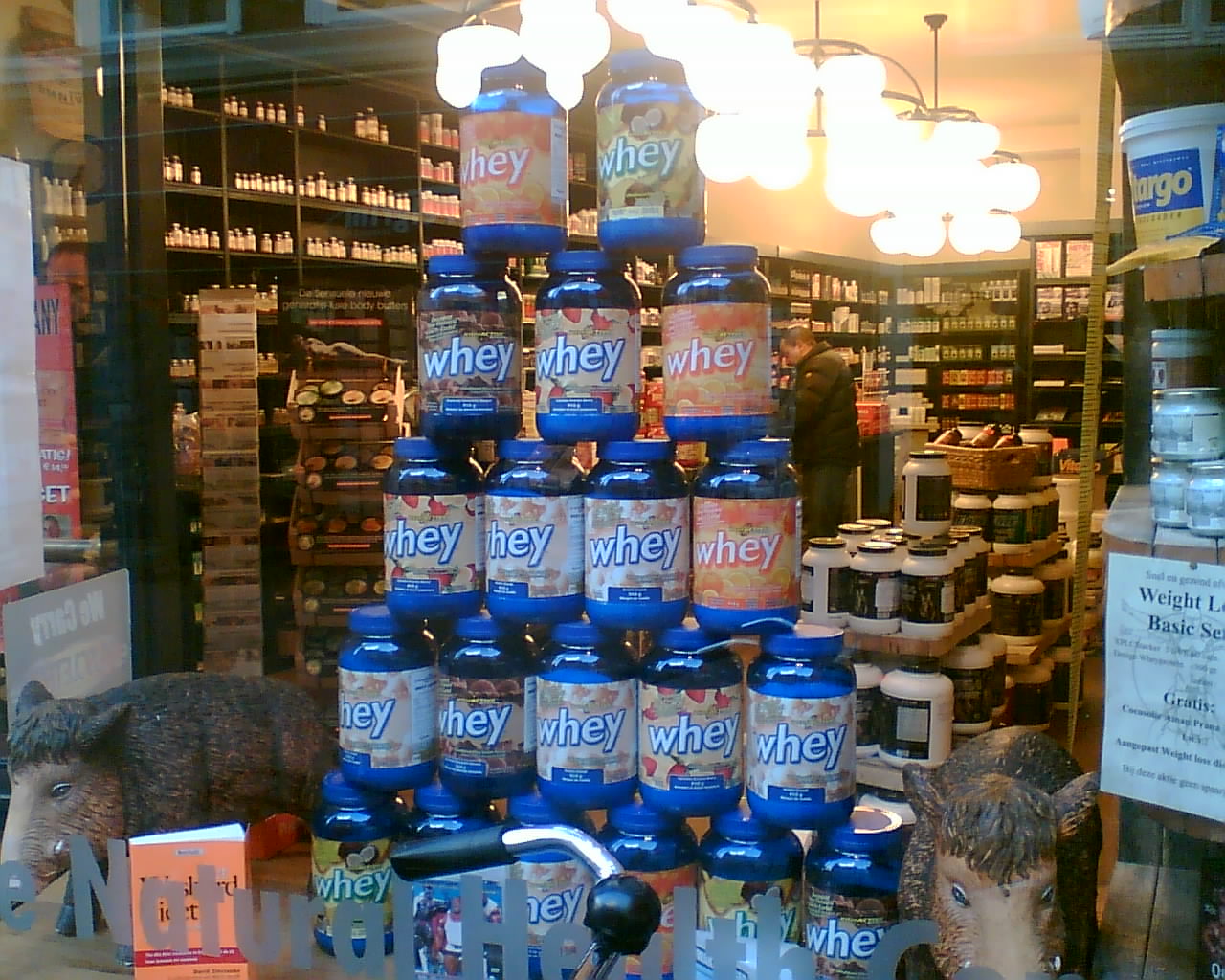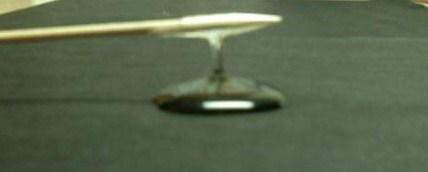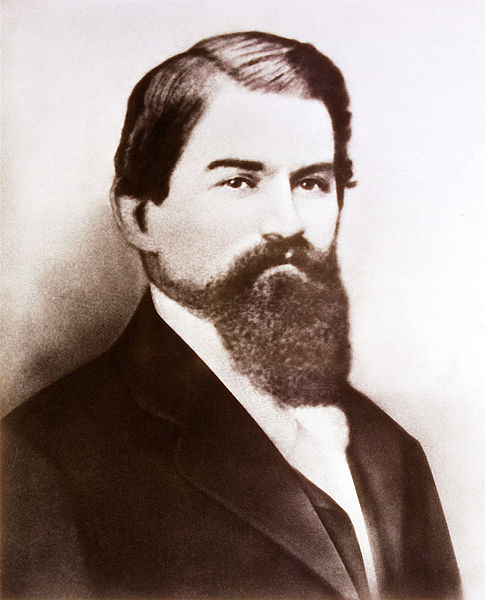|
Twin Bing
The Twin Bing is a candy bar made by the Palmer Candy Company of Sioux City, Iowa. It consists of two round, chewy, cherry-flavored nougats coated with a mixture of chopped peanuts and chocolate. The company also produces individual Bings, as well as the King Bing, a package of three. The Twin Bing was introduced in the 1960s, possibly in 1969, according to Marty Palmer, the 5th-generation president of the Palmer Candy Company, and has been called "one of Sioux City's quintessential treats". History The original Bing was introduced in 1923. The Bing originally came in four flavors: cherry, pineapple, vanilla, and maple. It is still made by hand today. Sometime in the 1920s to 1930s, the candy bar was released in a "Crow Bar" package that included trading cards featuring film stars. Marty Palmer himself was only vaguely aware that trading cards had been packaged with one of Palmer's candy bars until someone sent him copies of the cards. Comprising more than 100 cards, the series inc ... [...More Info...] [...Related Items...] OR: [Wikipedia] [Google] [Baidu] |
Idaho Spud
The Idaho Spud is a candy bar made by the Idaho Candy Company. It has been produced since 1918 and is distributed primarily throughout the Pacific Northwest region of the United States. The wrapper of the product bears the slogan "The Candy Bar That Makes Idaho Famous." The bar was invented by Thomas "T.O." Smith, who founded the Idaho Candy Company in 1901. Sales According to the Idaho Candy Company, the Idaho Spud is in the top 100 best-selling candy bars in the Northwest United States. The bar is sold at room temperature, but is often frozen before consumption. They are also sold as bite size candies in clear plastic tubs. Candy content The candy bar consists of a cocoa-flavored marshmallow center which is covered with compound chocolate (a chocolate replacement made from cocoa, sugar, and vegetable fats) and sprinkled with coconut flakes. The oblong shape of the candy bar resembles a potato. The product has 180 calories and weighs 1.5 ounces or 43 grams. Ingredients * Suga ... [...More Info...] [...Related Items...] OR: [Wikipedia] [Google] [Baidu] |
Inverted Sugar Syrup
Inverted sugar syrup, also called invert syrup, invert sugar, simple syrup, sugar syrup, sugar water, bar syrup, syrup USP, or sucrose inversion, is a syrup mixture of the monosaccharides glucose and fructose, that is made by hydrolytic saccharification of the disaccharide sucrose. This mixture's optical rotation is opposite to that of the original sugar, which is why it is called an ''invert'' sugar. It is sweeter than table sugar, and foods that contain invert sugar retain moisture better and crystallize less easily than do those that use table sugar instead. Bakers, who call it ''invert syrup'', may use it more than other sweeteners. Production Plain water Inverted sugar syrup can be made without acids or enzymes by heating it up alone: two parts granulated sugar and one part water, simmered for five to seven minutes, will be partly inverted. The amount of water can be increased to increase the time it takes to reach the desired final temperature, and increa ... [...More Info...] [...Related Items...] OR: [Wikipedia] [Google] [Baidu] |
Whey
Whey is the liquid remaining after milk has been curdled and strained. It is a byproduct of the manufacturing of cheese or casein and has several commercial uses. Sweet whey is a byproduct resulting from the manufacture of rennet types of hard cheese, like cheddar or Swiss cheese. Acid whey (also known as sour whey) is a byproduct brought out during the making of acid types of dairy products, such as strained yogurt. Whey proteins consist of α-lactalbumin, β-lactoglobulin, serum albumin, immunoglobulins, and proteose peptones. Composition Whey protein is the collection of globular proteins isolated from whey. The protein in cow's milk is 20% whey protein and 80% casein protein, whereas the protein in human milk is 60% whey and 40% casein. The protein fraction in whey constitutes approximately 10% of the total dry solids in whey. This protein is typically a mixture of beta-lactoglobulin (~48-58%), alpha-lactalbumin (~13-19%), bovine serum albumin (~6%)(see also ser ... [...More Info...] [...Related Items...] OR: [Wikipedia] [Google] [Baidu] |
Cocoa Powder
Cocoa may refer to: Chocolate * Chocolate * ''Theobroma cacao'', the cocoa tree * Cocoa bean, seed of ''Theobroma cacao'' * Chocolate liquor, or cocoa liquor, pure, liquid chocolate extracted from the cocoa bean, including both cocoa butter and cocoa solids * Cocoa butter, a pale yellow, edible fat extracted from the cocoa bean * Cocoa solids or cocoa powder * Hot chocolate, also called hot cocoa * Cocoa Mountain, a gourmet chocolate enterprise in Durness in the North West Highlands of Scotland * Cocoa Processing Company, a Ghanaian company Computing * Cocoa (API), an API and programming environment for macOS * Cocoa Touch, an API and programming environment for iOS, iPadOS, watchOS and tvOS * CoCoA, a computer algebra system * COCOA (digital humanities), an early FORTRAN program for generating concordances and word counts from natural language texts * Stagecast Creator, formerly Cocoa, a language developed by Apple to teach programming to children Given name * Cocoa Brown ... [...More Info...] [...Related Items...] OR: [Wikipedia] [Google] [Baidu] |
Palm Kernel Oil
Palm kernel oil is an edible plant oil derived from the kernel of the oil palm tree '' Elaeis guineensis''. It is related to other two edible oils: ''palm oil'', extracted from the fruit pulp of the oil palm, and '' coconut oil'', extracted from the kernel of the coconut. Palm kernel oil, palm oil, and coconut oil are three of the few highly saturated vegetable fats; these oils give the name to the 16-carbon saturated fatty acid palmitic acid that they contain. Palm kernel oil, which is semi-solid at room temperature, is more saturated than palm oil and comparable to coconut oil. History Oil from the African oil palm ''Elaeis guineensis'' has long been recognized in West African countries. European merchants trading with West Africa occasionally purchased palm oil for use in Europe, but palm kernel oil remained rare outside West Africa. The USDA has published historical production figures for palm kernel oil for years beginning October 1 and ending September 3 ... [...More Info...] [...Related Items...] OR: [Wikipedia] [Google] [Baidu] |
Hydrogenation
Hydrogenation is a chemical reaction between molecular hydrogen (H2) and another compound or element, usually in the presence of a catalyst such as nickel, palladium or platinum. The process is commonly employed to reduce or saturate organic compounds. Hydrogenation typically constitutes the addition of pairs of hydrogen atoms to a molecule, often an alkene. Catalysts are required for the reaction to be usable; non-catalytic hydrogenation takes place only at very high temperatures. Hydrogenation reduces double and triple bonds in hydrocarbons. Process Hydrogenation has three components, the unsaturated substrate, the hydrogen (or hydrogen source) and, invariably, a catalyst. The reduction reaction is carried out at different temperatures and pressures depending upon the substrate and the activity of the catalyst. Related or competing reactions The same catalysts and conditions that are used for hydrogenation reactions can also lead to isomerization of the alkenes f ... [...More Info...] [...Related Items...] OR: [Wikipedia] [Google] [Baidu] |
Corn Syrup
Corn syrup is a food syrup which is made from the starch of corn (called maize in many countries) and contains varying amounts of sugars: glucose, maltose and higher oligosaccharides, depending on the grade. Corn syrup is used in foods to soften Food texture, texture, add volume, prevent crystallization of sugar, and enhance flavor. Corn syrup is not the same as from high-fructose corn syrup (HFCS), which is manufactured from corn syrup by converting a large proportion of its glucose into fructose using the enzyme xylose isomerase, D-xylose isomerase, thus producing a sweeter substance. The more general term glucose syrup is often used synonymously with corn syrup, since glucose syrup in the United States is most commonly made from corn starch. Technically, glucose syrup is any liquid starch hydrolysis, hydrolysate of mono-, di-, and higher-saccharides and can be made from any source of starch: wheat, tapioca and potatoes are the most common other sources. Commercial preparatio ... [...More Info...] [...Related Items...] OR: [Wikipedia] [Google] [Baidu] |
Peanut
The peanut (''Arachis hypogaea''), also known as the groundnut, goober (US), pindar (US) or monkey nut (UK), is a legume crop grown mainly for its edible Seed, seeds. It is widely grown in the tropics and subtropics, important to both small and large commercial producers. It is classified as both a grain legume and, due to its high oil content, an oil crop. World annual production of shelled peanuts was 44 million tonnes in 2016, led by China with 38% of the world total. Atypically among legume crop plants, peanut pods develop underground (geocarpy) rather than above ground. With this characteristic in mind, the botanist Carl Linnaeus gave peanuts the specific epithet ''hypogaea'', which means "under the earth." The peanut belongs to the botanical Family (biology), family Fabaceae (or Leguminosae), commonly known as the legume, bean, or pea family. Like most other legumes, peanuts harbor symbiotic Nitrogen fixation, nitrogen-fixing bacteria in root nodules. The capacity to fi ... [...More Info...] [...Related Items...] OR: [Wikipedia] [Google] [Baidu] |
Sugar
Sugar is the generic name for sweet-tasting, soluble carbohydrates, many of which are used in food. Simple sugars, also called monosaccharides, include glucose, fructose, and galactose. Compound sugars, also called disaccharides or double sugars, are molecules made of two bonded monosaccharides; common examples are sucrose (glucose + fructose), lactose (glucose + galactose), and maltose (two molecules of glucose). White sugar is a refined form of sucrose. In the body, compound sugars are hydrolysed into simple sugars. Longer chains of monosaccharides (>2) are not regarded as sugars, and are called oligosaccharides or polysaccharides. Starch is a glucose polymer found in plants, the most abundant source of energy in human food. Some other chemical substances, such as glycerol and sugar alcohols, may have a sweet taste, but are not classified as sugar. Sugars are found in the tissues of most plants. Honey and fruits are abundant natural sources of simple sugars. Sucr ... [...More Info...] [...Related Items...] OR: [Wikipedia] [Google] [Baidu] |
Coca-Cola
Coca-Cola, or Coke, is a carbonated soft drink manufactured by the Coca-Cola Company. Originally marketed as a temperance drink and intended as a patent medicine, it was invented in the late 19th century by John Stith Pemberton in Atlanta, Georgia. In 1888, Pemberton sold Coca-Cola's ownership rights to Asa Griggs Candler, a businessman, whose marketing tactics led Coca-Cola to its dominance of the global soft-drink market throughout the 20th and 21st century. The drink's name refers to two of its original ingredients: coca leaves and kola nuts (a source of caffeine). The current formula of Coca-Cola remains a closely guarded trade secret; however, a variety of reported recipes and experimental recreations have been published. The secrecy around the formula has been used by Coca-Cola in its marketing as only a handful of anonymous employees know the formula. The drink has inspired imitators and created a whole classification of soft drink: colas. The Coca-Cola C ... [...More Info...] [...Related Items...] OR: [Wikipedia] [Google] [Baidu] |
Frangelico
Frangelico () is a brand of (flavored with hazelnuts) and herb-flavored liqueur coloured with caramel coloring, which is produced in Canale, Italy. It is 20% alcohol by volume (ABV) or 40 proof. Formerly, it was 24% ABV or 48 proof. When produced by the Barbaro family it was bottled at 28% ABV or 56 proof. The brand was created in 1978. It is known for its unusual packaging; its bottle was designed to look like a Christian friar, complete with a knotted white cord around the waist. It is most commonly sold in two sizes: 750ml and 375ml. According to the manufacturer, the name of the liqueur is based on a legend of a hermit monk named Fra Angelico who lived in the Piedmont region of Italy and "created unique recipes for liqueurs". The bottle itself most closely resembles the habit of a Franciscan friar. Frangelico is made in a similar manner to some other nut liqueurs: nuts are crumbled up and combined with cocoa, vanilla berries, and other natural flavors, and then left ... [...More Info...] [...Related Items...] OR: [Wikipedia] [Google] [Baidu] |


.jpg)




